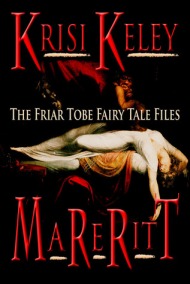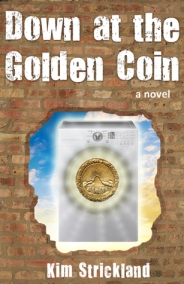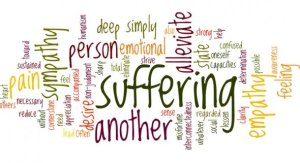Editor’s note: The following guest post by Victor Smith is the second of a three-part series on Visionary Fiction aimed at increasing awareness of the genre and helping readers discover, explore, and enjoy Visionary Fiction.
Let’s suppose, as projected in Part One of this series, “The Bucket,” that Visionary Fiction becomes as prominent a genre label as Science Fiction or Mystery. Now let’s consider the ingredients writers must put into a work to have it qualify for the Visionary Fiction bucket and what experiences or benefits readers can expect in a work pulled out of that bucket.
Arguments over some elements have raged for decades and will go on for decades more. Ours is a quantum world where every story has elements of just about every other story; but some stories have more in common than others. Here we examine the essential components, leaving the optional and controversial elements for later discussion.
Well-written Fiction
In The Secrets of Ebook Publishing Success, Mark Coker states as Secret # 1: “Write a great book,” which is almost too obvious to deserve mention. Regrettably, Visionary Fiction and similar genres have attracted a disproportionate number of authors (many from other professions) with brilliant ideas but inferior writing skills, thus forcing readers to wade through a bin of sub-par products before finding something worthwhile. A few VF works with glaring deficiencies in standard fictional practice, like James Redfield’s Celestine Prophecy, did rocket up the best-seller lists, propelled perhaps by novelty. This misled aspiring authors to assume that a sublime message trumps amateur writing. All elements of good fiction—language, plot, character, setting, imagery, etc.—remain prerequisites in VF. Rules, of course, can be consciously broken, but only deliberately.
In “The Puzzle of Visionary Fiction,” Hal Zina Bennet makes several points pertinent to crafting quality Visionary Fiction:
“What happens in most visionary fiction that I’ve read over the years is that it gets burdened down by the author’s desire to get readers to believe what he or she believes. Characters disappear in the author’s message, which is another way of saying that they are two-dimensional, thinly disguised vehicles that simply recite the author’s beliefs. An engaging story is simply lacking and the writing never quite brings readers into that place of wonder, fear, discovery, which might transcend simple belief systems. We try to reproduce our own spiritual experiences on the page rather than giving readers what they need to have that experience for themselves.”
Growth in Consciousness
Here is author Michael Gurian’s opening line on his pioneering VF website:

“Visionary fiction is fiction in which the expansion of the human mind drives the plot.”
And the first characteristic of VF, according to the Visionary Fiction Alliance:
“Growth of consciousness is the central theme of the story and drives the protagonist, and/or other important characters.”
In “The Altered State of Visionary Fiction,” Monty Joynes writes:
“For me, the Visionary Fiction genre includes novels that deal with shifts in awareness that result in metaphysical understanding by the central characters. The plot of the novel is generally more concerned with internal experiences than with external.”
All the commentators I consulted on the basic nature of VF agree that expansion of the mind or growth in consciousness is the hallmark of Visionary Fiction.
In any credible story the characters must change, but in VF this change is from the inside out rather than from outside in. The reader sits in the co-pilot’s chair and gets to mind-read the pilot’s thoughts, intentions and decisions as they occur. He witnesses how the protagonist’s thinking influences external outcomes and how he adjusts to respond to the “slings and arrows of outrageous fortune.”
Growth in consciousness dictates that Visionary Fiction be optimistic. In materially based stories, birth inevitably results in death. In VF, birth begets rebirth at a higher level. Mind/consciousness development is the make-break ingredient in Visionary Fiction. If it’s missing, it’s not Visionary Fiction—it’s that simple.
The Reader Shares the Growth Experience
In “The Article that started it all,” author Jodine Turner writes:
“Visionary Fiction is like the legendary Celtic Imram [the mythical heroes’ quest]. The drama and tension of the characters’ adventures is one layer of the tale. All of the usual elements of suspense, conflict, even romance and mystery, are interwoven in the plot. The other layer, deeper and more archetypal, is that mystical inner journey of spiritual awakening. In Visionary Fiction, esoteric wisdom is embedded in story so that the reader can actually experience it, instead of merely learning about it.”
And author Margaret Duarte seconds this notion:
“What separates VF from other speculative fiction is intention. Besides telling a good story, VF enlightens and encourages readers to expand their awareness of greater possibilities.”
The reader is not only in the cockpit with access to the pilot’s thoughts; she is enticed to think along with him, then grab hold of the controls, and do some flying herself. This element, engineered into the work, is perhaps VF’s most innovative, and also its most difficult to achieve. Visionary Fiction renders the reading experience interactive. The most gratifying comments on my own VF work, The Anathemas, a novel about reincarnation, came from readers who said that my book helped them see how past life experiences influence them today, and yet the book contains no regression technique per se; readers learned through the story’s characters.
We have progressed beyond where readers can just be told (the authority paradigm);instead, give readers the bare essentials and invite them to try it (the Gnostic or experiential model). The best VF is multi-layered to suit readers at different awareness levels. A bonus: rereading such well-constructed books yields a whole different experience the second time through.
The Spiritual Component
When we speak of thoughts, ideas, visualization, consciousness, and internal growth, we are, like it or not, in the spiritual (non-material, by definition) realm rather than in the physical or empirical. The quotes above contain phrases like “metaphysical understanding” and “mystical inner journey of spiritual awakening.” The VF Alliance definition states:
“[Visionary Fiction] embraces spiritual and esoteric wisdom, often from ancient sources, and makes it relevant for our modern life.”
Although it was not always so, the difference between religion and spirituality is now established:
- Religion refers to a specific set of beliefs and practices agreed upon a group of people; fiction specific to such a community is Religious Fiction.
- Spirituality is universal in embrace; consciousness, thought, visualization, and change are common to all human beings.

Because, as put by the VF Alliance, Visionary Fiction “is universal in its worldview and scope,” VF is the genre proper to spirituality. Visionary Fiction should ring as true to a Catholic as to a Buddhist, to a woman as to a man, to a heterosexual as to a homosexual, to an American as to a Polynesian. A tall order but an excellent acid test, and apropos for this age of entrenched dichotomy.
What of fiction that centers on single issues, even if from a spiritual viewpoint: recovery, women’s’ rights, political reform? Since many such topics fall into already established categories and lack the universal ingredient, they would not qualify as VF. We are looking to house orphans, not steal other people’s kids.
Just because VF has a spiritual focus does not mean it is “all sweetness and light.” As taught in Composition 101, every story requires conflict. Professor Edward Ahearn sees VF as the strident voice of protest against the stagnant status quo. Visionary writers, he says in Visionary Fictions: Apocalyptic Writing from Blake to the Modern Age (2011), seek a personal way to explode the normal experience of the “real,” using prophetic visions, fantastic tales, insane rantings, surrealistic dreams, and drug- or sex-induced dislocations in their work. Their fiction expresses rebellion against all the values of Western civilization—personal, sexual, familial, religious, moral, societal, and political. Ahearn’s “shock and awe” style of VF may be extreme, but a touch of it might prove the antidote against VF’s otherwise Milquetoast reputation.
To conclude on this vital spiritual component, we call on author Theresa Nash, who says in “How I Use Visionary Fiction And It Uses Me”:
“Visionary Fiction is about breaking the rules. It’s about remembering that we write our own stories. The true function of our stories is enabling a harmony between our condition and the Divine. They should inspire us to live our best lives, provide signposts on the journey. They should help us burst through the self-imposed bubble of our human potential to possibilities we can only imagine when we’re mired in chaos, conflict, and survival.”
Paranormal Perceptions
The word visionary implies the ability to see beyond what can be viewed with physical sight. Growth in human consciousness demands that we transcend the five senses when assigning validity to an experience. Thus Monty Joynes can say about VF:
“The work is also ‘visionary’ in the aspect that the authors sometimes (or often) employ non-rational means such as dreams or extrasensory perceptions to develop the content of the book.”
 Michael Gurian is more emphatic about this element, saying that in VF such extraordinary phenomena “not only happen, but drive the plot and its characters (i.e. without these experiences, there would be no plot or character).” The VF Alliance holds that VF “oftentimes uses reincarnation, dreams, visions, paranormal, psychic abilities, and other metaphysical plot devices.” In “Visionary Fiction: Rediscovering Ancient Paths to Truth,” Hal Zina Bennett sums it up quite poetically:
Michael Gurian is more emphatic about this element, saying that in VF such extraordinary phenomena “not only happen, but drive the plot and its characters (i.e. without these experiences, there would be no plot or character).” The VF Alliance holds that VF “oftentimes uses reincarnation, dreams, visions, paranormal, psychic abilities, and other metaphysical plot devices.” In “Visionary Fiction: Rediscovering Ancient Paths to Truth,” Hal Zina Bennett sums it up quite poetically:
“Like a shaman’s stories of the spirit world, where the spirits of animals, trees, sky, or the stars teach us how to live, visionary fiction introduces us to a reality beyond physical reality. They often carry us deep into a consciousness once thought to be the domain of seers, visionaries, oracles and psychics. The magic of this genre is the magic of human consciousness itself, our ability to see beneath the surface and create new visions of what our lives can be.”
While clumsy or exaggerated use of dreams, ghosts, telekinesis or conversations with angels can make a story far-fetched or laughable, super-sensory perceptions, used by a writer who has properly studied, experienced, or intuited such phenomena, blend into the story and move it forward as naturally as an unexpected phone call or unwelcome guest would do in a non-VF tale.
The presence of a paranormal device does not make fiction automatically visionary. A detective story in which a mentalist solves the crime is only visionary if it probed the mind of the psychic and demonstrated how his gift leads to a higher state of consciousness. On the other hand, certain literary forms like myths, fairy tales, and talking animal stories, which are generally categorized as Fantasy (wholly contrived), should not be summarily exorcised from VF; think Richard Bach’s Jonathan Livingston Seagull.
Conclusion

Visionary Fiction is still in the “becoming” stage, still emerging as a genre distinct from its various venerable ancestors (Science Fiction, Fantasy or Religious Fiction). Although driven by the current human imperative to evolve mentally and spiritually, this genre still begs for more structure as an art form and a larger niche in the marketplace in which to house its burgeoning creative activity.
In “Part One: The Bucket,” we argued to establish a single brand name, perfect or not: Visionary Fiction. Part Two aims to initiate a vigorous buzz around the characteristics of Visionary Fiction.
In “Part Three: Visionary Fiction, the Action Plan,” we will examine practical ways the VF community can position the Visionary Fiction bucket, now chock full of goodies in high demand, so that authors can make frequent deposits with confidence in a vibrant marketplace, and readers can make regular withdrawals with a transforming experience guaranteed.

Victor E. Smith
Photos by Victor E. Smith

A lifelong proponent of human spiritual evolution, Victor E. Smith has focused on paranormal phenomena and their manifestations. THE ANATHEMAS, A Novel of Reincarnation and Restitution, is widely available. A prequel and a sequel are well underway.
Related posts:
Visionary Fiction Part One: The Bucket
Visionary Fiction Part Three: The Action Plan



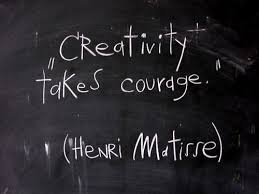











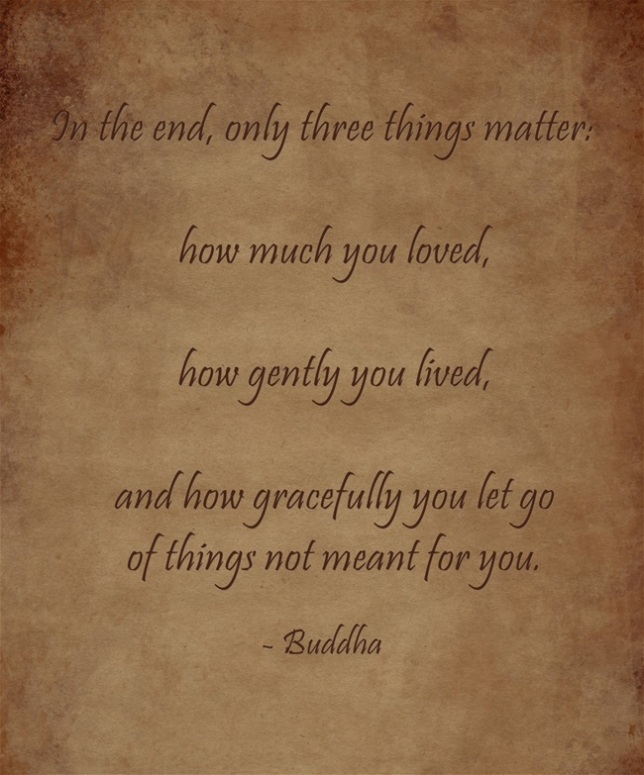


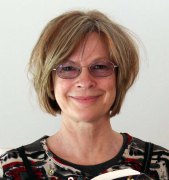




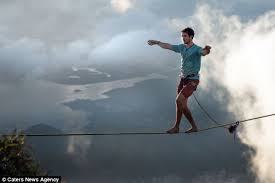



















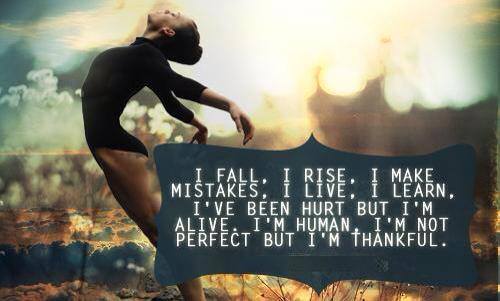

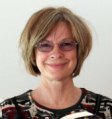








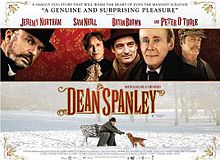



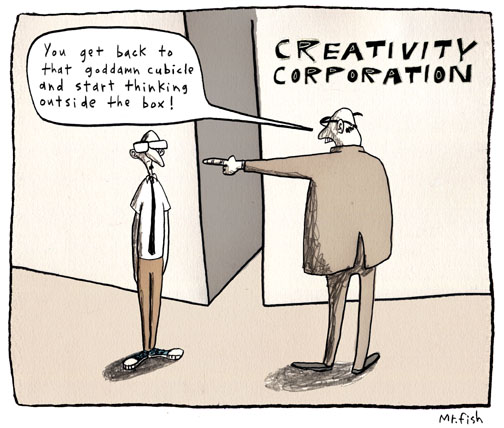


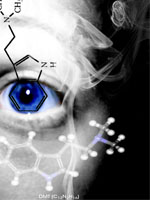
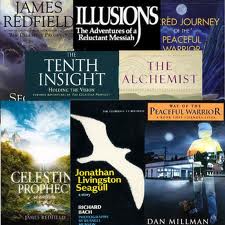

 How did a
How did a